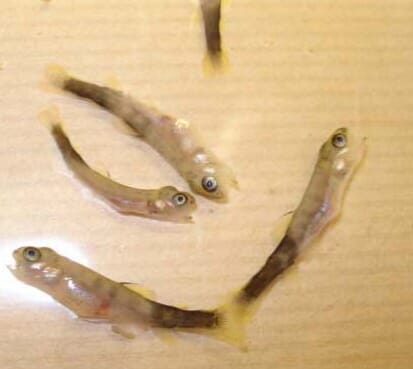The disease, which caused significant mortalities at two fish farms has been attributed to a protozoan, possibly of the family Sarcocystidae.
This family of protozoan had not previously been associated with disease in fish.
Although the condition has only been reported from Sweden, the source and distribution of the parasite and any associated disease is presently unknown. Fish farmers are therefore being urged to be aware of the clinical signs of the disease.
Clinical signs which may be indicative of the disease include increased mortality, a black discolouration to the posterior section of the body and swelling over the dorsal surface of the head area (the cranium).

Mortality has been reported as variable, but can be significant; up to 15 per cent has been experienced in juvenile fish at approximately one month post hatching and of a length up to 2.5 cm at one of the sites associated with the condition.
There is no evidence from the Swedish authorities of any risk to human health.




